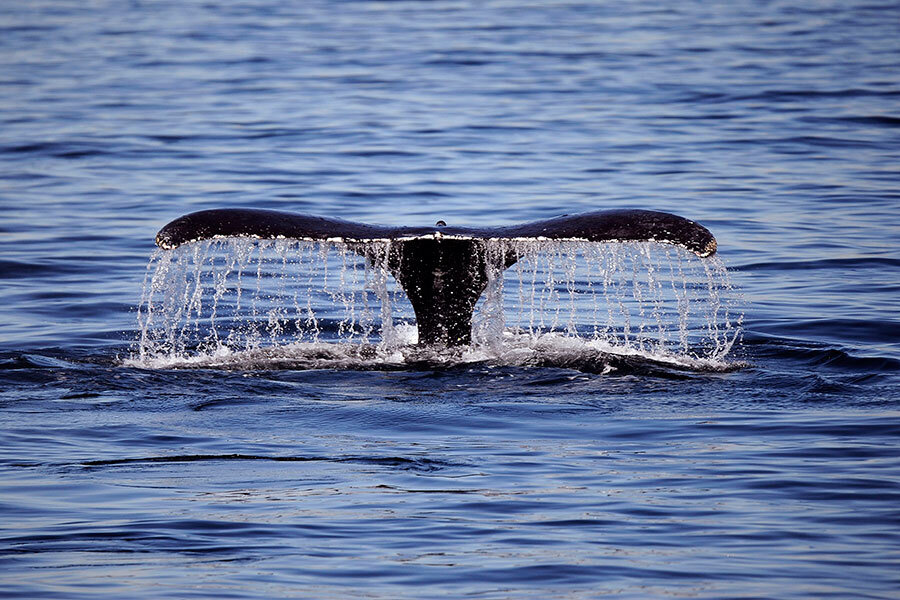Two blue whales spotted off New Hampshire in rare sighting
Loading...
In a rare treat, two blue whales were spotted Friday off the coast of New Hampshire.
Seeing one off the Northeastern shores of the United States is unusual, but two together is “simply unheard of,” as Jennifer Kennedy, executive director of the Blue Ocean Society for Marine Conservation, described it.
"We might see a blue whale every five to ten years, so it was possible, but rare," Ms. Kennedy told WMUR-TV. "And we've never seen two together in our last 20 years of whale watching and research off the N.H. coast."
Blue whales are thought to be the biggest beasts ever to have graced our globe, stretching to 100 feet in length and weighing upwards of 200 tons. Their tongues can weigh as much as an elephant, their hearts as much as a car, according to National Geographic.
Yet quite how these behemoths sustain their size is a source of some surprise, considering that their diet consists almost exclusively of tiny shrimp-like creatures called krill.
Each whale will take in about four tons of krill on a daily basis. It has long been known that blue whales and their baleen whale cousins use "bubble netting," a technique in which the whales, sometimes swimming in teams, will dive below a krill swarm, sending up an enormous fountain of bubbles to alarm and displace the group. The disoriented krill are then much easier to catch.
But recent research has revealed yet another nuance to the whales' feeding behavior.
"For blue whales, one of our main questions has been: 'How do they eat efficiently to support that massive body size?'" Elliott Hazen, an ecologist of the US National Oceanic and Atmospheric Administration, said in 2015, after publishing a study on their eating habits. "Now we know that optimizing their feeding behavior is another specialization that makes the most of the food available."
Specifically, the researchers found that blue whales are able to analyze a swarm of krill – which can be up to 2 million-strong – and deduce its density. For those masses of krill that are less dense, the whales will expend less energy in foraging amongst them; when the krill are packed tightly together, the whales will dive deeper and lunge more frequently, using more oxygen but reaping greater rewards.
Blue whales are classified as endangered by the International Union for the Conservation of Nature, but their prospects are improving, with numbers increasing. The creatures are found in almost all the world’s oceans, except the Arctic and some regional seas, such as the Mediterranean.
Aboard the vessel that made the sighting off New Hampshire was Dianna Schulte, the co-founder and research coordinator of the Blue Ocean Society. Ms. Schulte plans to send the photos she took to researchers in Canada, in hope of learning more about the two whales that gave her and her fellow sailors such a welcome surprise.








